In the morning hours of 5 October, the Sun produced a relatively weak B7.8 flare. Interesting were its atypical x-ray evolution and its very long duration. Indeed, starting at 03:17UT, it reached its maximum x-ray intensity only at 07:30UT. Ending at 10:46UT, the flare lasted for a whopping 7 hours and 29 minutes, and that begged for some closer examination. As it turns out, this was a very complex event.
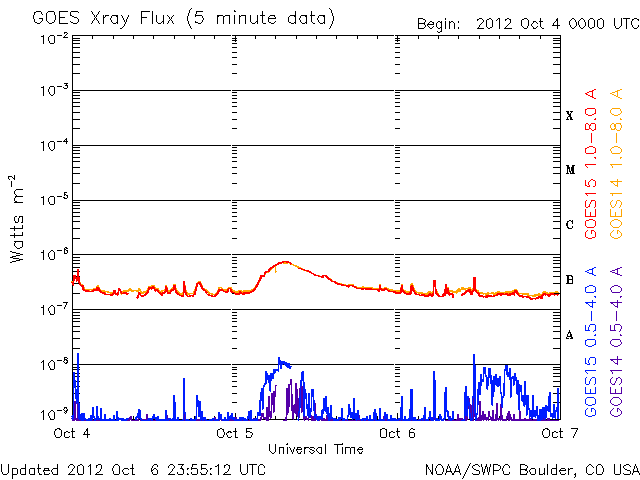
In white light, the Sun appeared very quiet, with only 3 inactive sunspot groups in the area: NOAA 1579 and 1582, each consisting of a big, but single sunspot, and –more to the southeast (bottom left) of NOAA 1582- the very small and decaying NOAA 1584. In H-alpha (the "cold" chromosphere), some fairly small filaments could be seen, with a prominent dark cloud near the southern solar pole and a dynamic filament to the east of NOAA 1582. The transition region and corona (extreme ultraviolet – EUV) sh owed a distinct coronal hole to the east (left) of the sunspot regions. There were also two pseudo-coronal holes, the smaller one being very close to NOAA 1584.
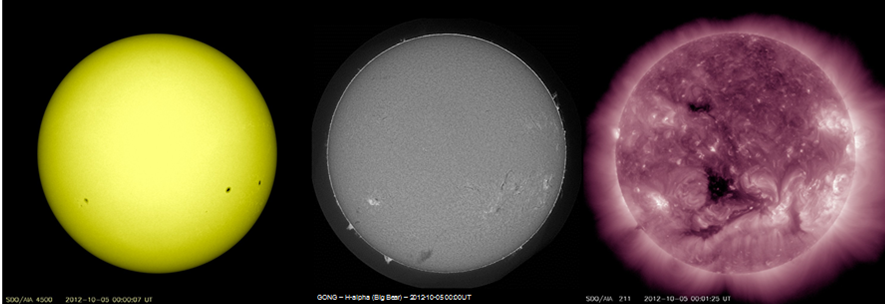
Using different colors, all these features can be put on a magnetogram. This gives an idea on their magnetic polarity (white is positive, black is negative). Sunspots are green, (H-alpha) filaments red, coronal holes are blue and the outlines of the pseudo coronal holes are in dashed orange. The yellow spots are regions showing up brightly in EUV (SDO/AIA 171), mostly corresponding to the sunspot regions. Noticeable are two large areas of opposite magnetic polarity. The "black" magnetic region contains the coronal hole (CH) and one of the pseudo CH, as well as the trailing part of the sunspot group NOAA 1584 (which is spotless). The "white" magnetic region contains the other pseudo CH and all the aforementioned sunspots. The neutral line separating these magnetic areas runs for 100.000's km, but only at the outer ends and near NOAA 1584, filaments can be seen. The hotter chromosphere (SDO/AIA 304) shows more material (brown) along this inversion line, trapped between the opposing magnetic fields.
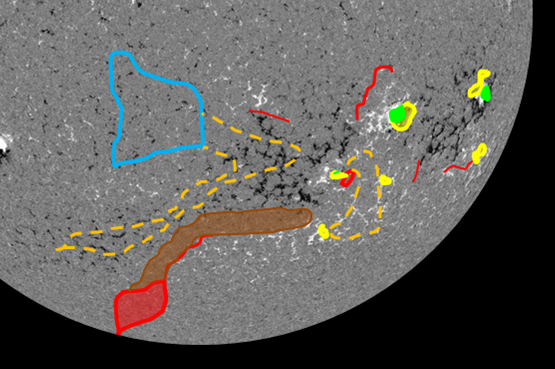
This movie shows the evolution of the event from 00:00 till 15:00UT, in successively higher temperatures (and thus altitudes). In the "hot chromosphere" (AIA 304; 50.000 degrees), southward movement of material along the inversion line into the H-alpha filament blob near the southern pole can be seen. This happens between midnight and 3 o'clock, so well before the onset of the flare. The flare itself is visible as a diffuse parallel ribbon flare, resulting from coronal material raining down into the much denser chromosphere. The brightest parts are about midway of the inversion line, near NOAA 1584. The filament near NOAA 1582 is very dynamic too, with eruptions around 06:15UT and 07:45UT.
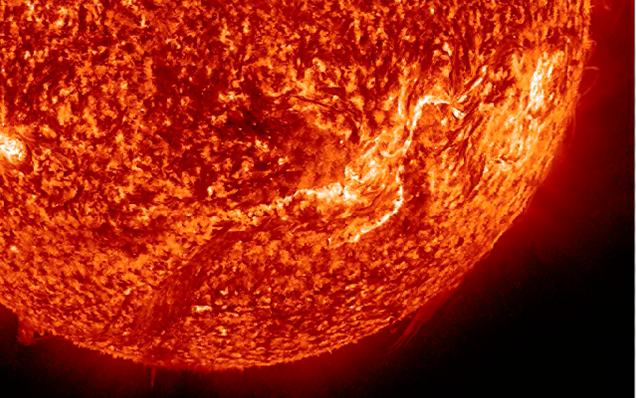
In the transition zone (AIA 171; 650.000 degrees) as well as in the corona (AIA 211; 2 million degrees), the material movement and the parallel ribbon flare are not so well visible. Only the ribbon bordering to the east side of the small pseudo CH can be more or less distinguished. However, two other features are claiming all attention. The first is a bright coronal loop emanating from the leading part of NOAA 1584, and crossing the magnetic inversion line. This one has not even completely disappeared, or another dynamic bundle of coronal loops springs from the *trailing* (spotless) part of NOAA 1584 towards a region between NOAA 1582's big spot and the dynamic filament. These 2 loop bundles appear well after the maximum in x-ray intensity (resp. between 07:00 and 10:30UT, and between 10:00 and 13:30UT).

The AIA 221 clip also shows how a series of fine coronal loops gradually obscure the small pseudo CH (starting around 10:30UT). Indeed, at the end of the clip, the feature has almost completely gone from view! The AIA 221 clip also provides a crisp view on the H-alpha filament blob near the Sun’s southern pole. It is visible as a fine-ragged web of tiny, dark (cold) filament strands.
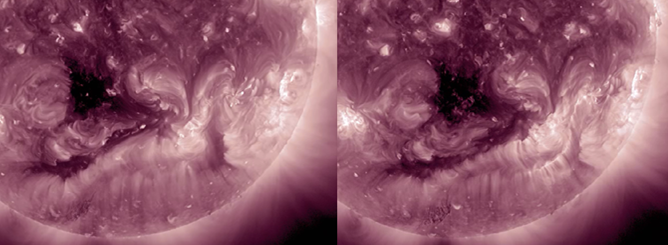
One more amazing thing about this long duration event: The (Earth-directed) coronal mass ejection associated with the flare was visible *before* the x-ray enhancement actually started! As can be seen in the STEREO-A movie, the ejected plasma cloud is already showing up in the coronagraph at around 02:30UT, more than 45 minutes before the onset of the flare. The speed was measured to be 550 km/s, indicating that the magnetic reconnection, which is at the base of all these events, took place shortly after midnight.
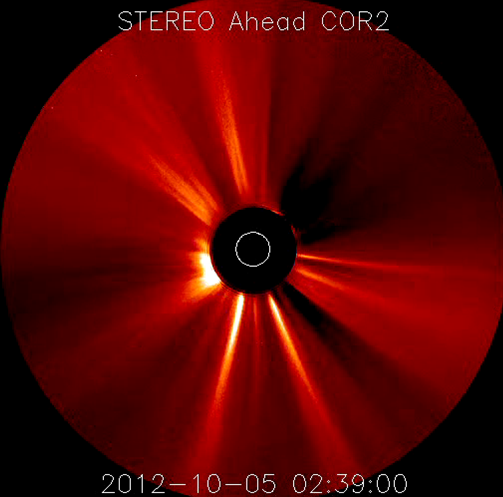
 |
 |





